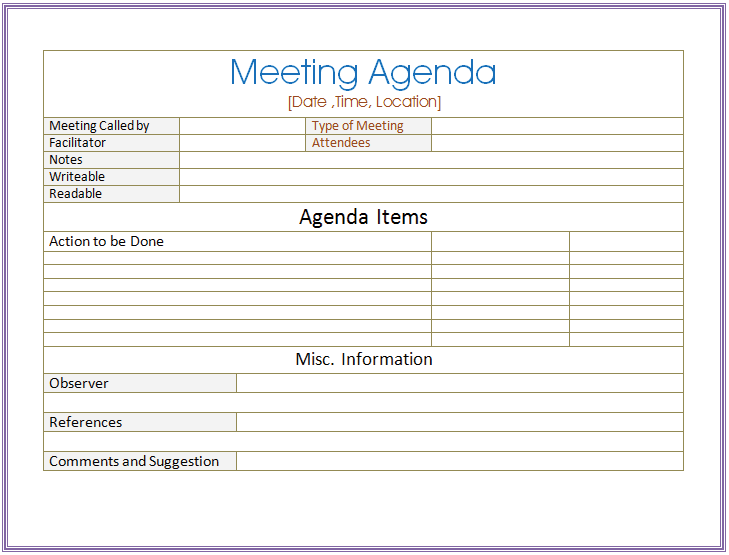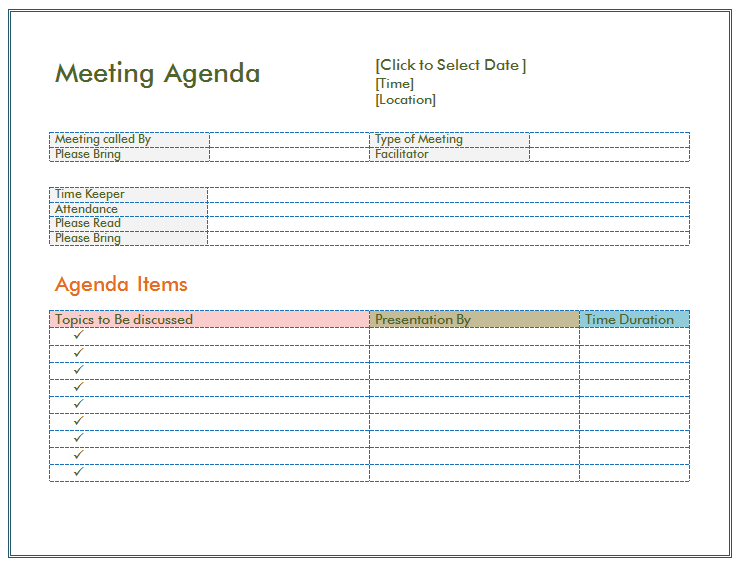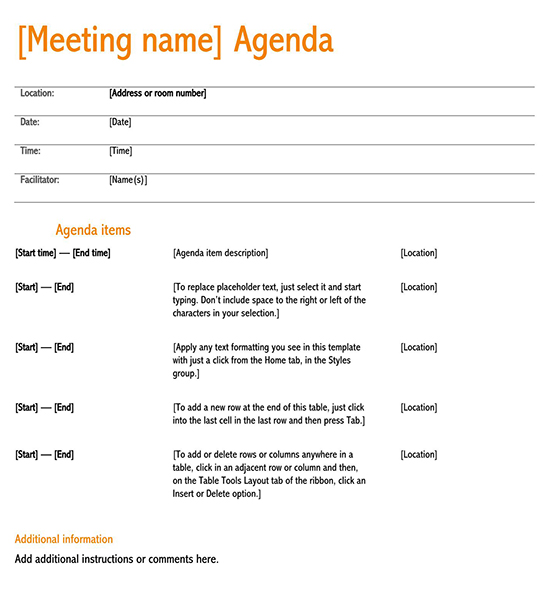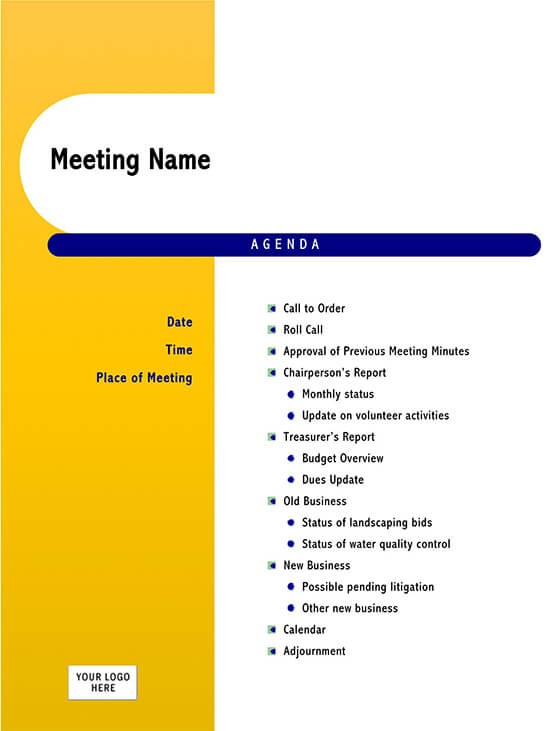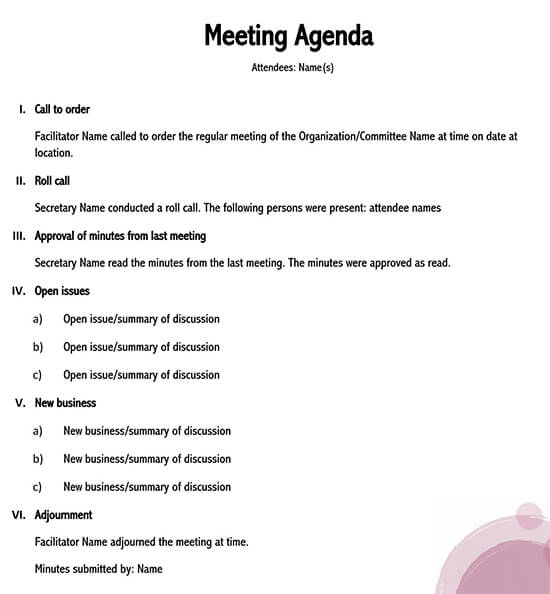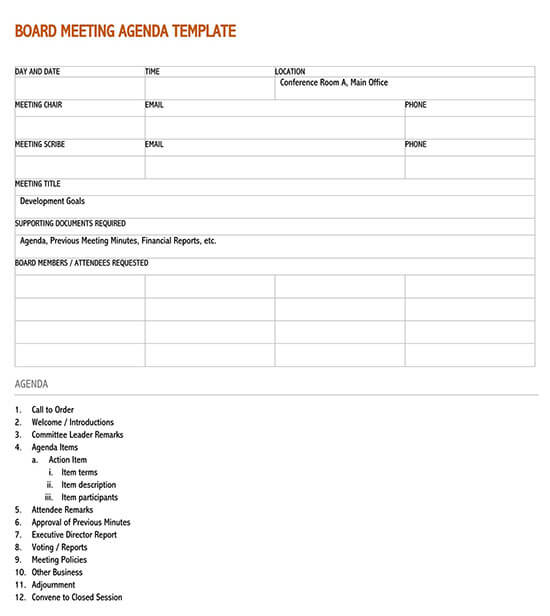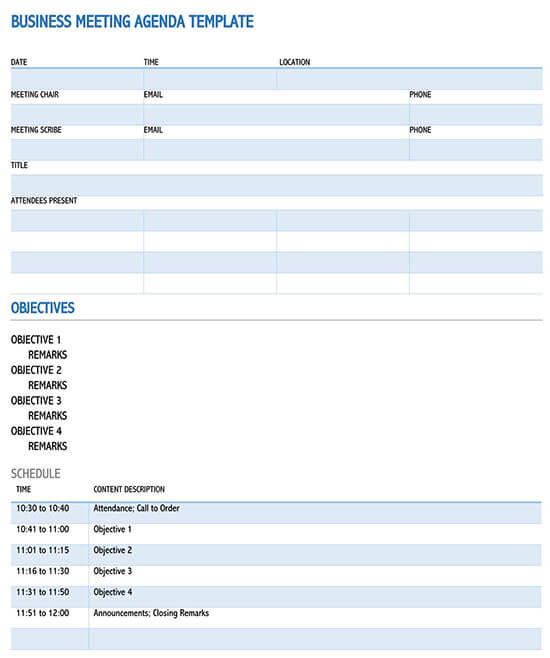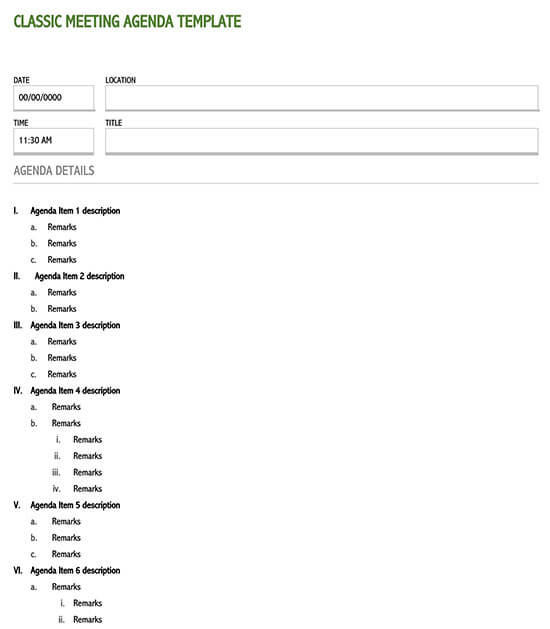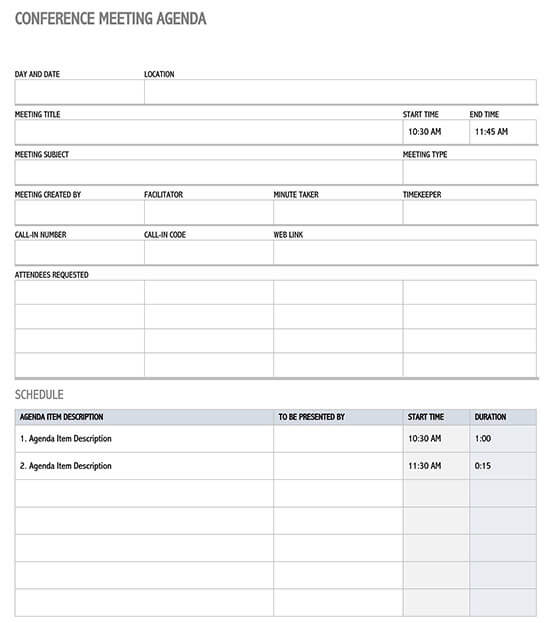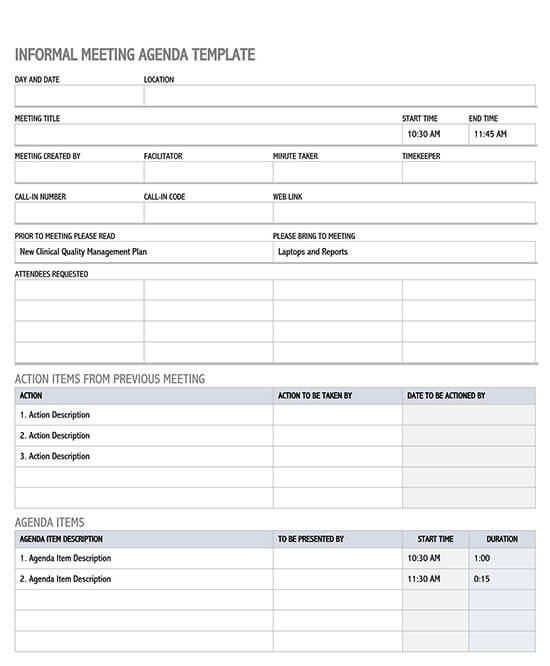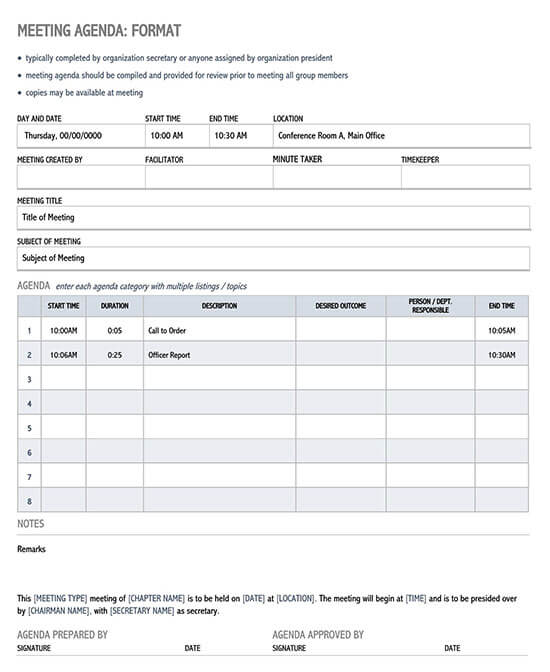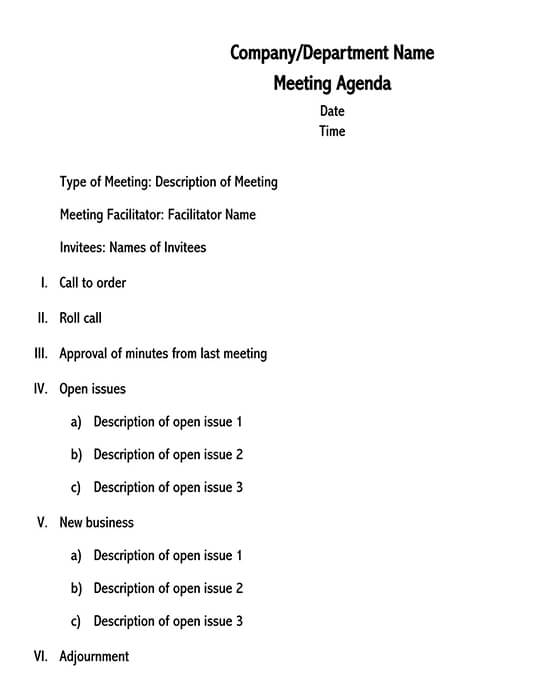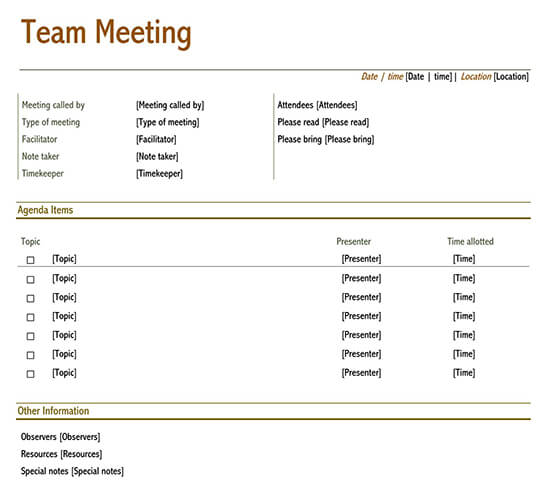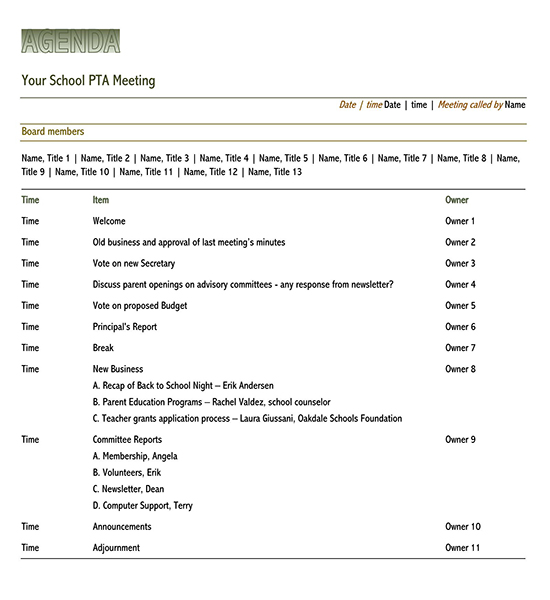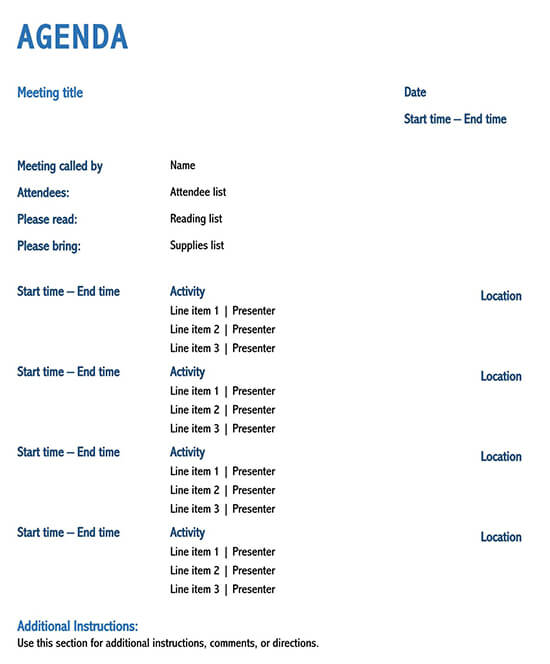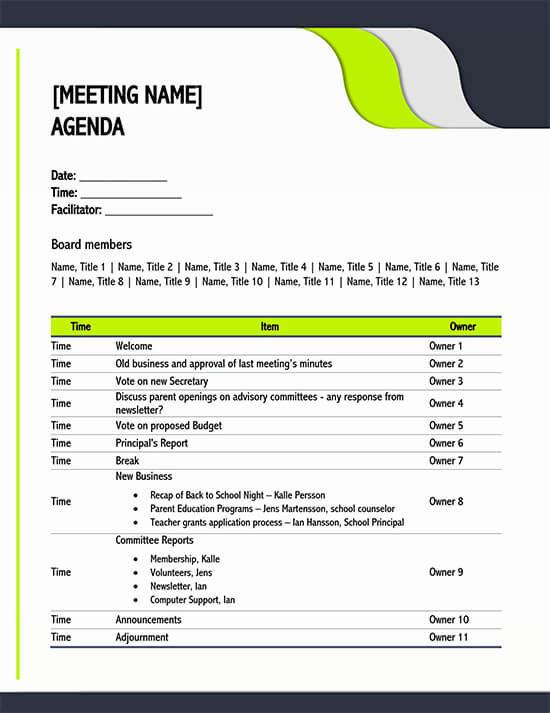In many formal settings and organizations, meetings are typically preceded by an agenda, which lays out the purpose of the meeting, as well as a plan with which the meeting is meant to adhere to. As a result, those in leadership and administration must write an effective agenda to make sure that business meetings don’t drag on endlessly, and without any purpose. Most often, groups and organizations have clear protocols or policies as to how agendas should be developed so as to be fair to all members.
A Meeting Agenda Template is a fillable document that serves the same function as a hand-written meeting agenda.
Through the course of this guide, we’ll take you through everything you need to know about writing an agenda for a meeting along with providing meeting agenda templates.
There are a number of aspects that you should consider, such as collecting input from the relevant sources, organizing the agenda in a logical way, and assigning the right amount of time for each topic, among others. Keep reading to find out just how you should go about writing an agenda for a meeting!
What is the Meeting Agenda?
An agenda is simply a list of topics that are to be covered over the course of a meeting. In an organizational or formal setting, an agenda is given out to attendees to inform them about the reasons for the meeting, the topics that are to be discussed, and the time/importance allotted to each particular topic. To write an agenda, you should follow these steps;
- Determine the purpose of the meeting.
- Collect input from all the relevant sources, i.e., the attendees.
- Process said input and put them under the relevant issues that are to be discussed.
- Estimate the amount of time required to deal with each particular topic.
- Assign a speaking time to attendees, based on the topic and their expertise.
- Add time at the end of the meeting for an overall review of the discussion.
Writing an Agenda for a Meeting
Following these steps will help you write an effective, coherent, and logically solid agenda. To give you more insight, we’ve also included just how you should go about each step;
- Determining the purpose of a meeting is typically the first step. Usually, this includes an overarching purpose, after which issues that impact said purpose are included as subtopics. For instance, a company may choose to have a meeting to discuss their project budget, with things like how much money is spent on marketing and advertising being subtopics.
- Collecting relevant information from attendees is also very important. If a meeting is called, all the pertinent information should be easily available for all members to ensure efficiency in communication. As a result, the leader should make this accessible. Examples include obtaining reports from various departments before calling for a meeting of all department heads in a company or organization.
- Once this is accomplished, the leader should categorize and prioritize all the issues that are to be discussed. Weighing each one against each other after considering which ones are most important at the moment of the meeting, then listing them in order of importance is the next step in making an effective agenda.
- After the topics are listed in order of importance, the person in charge of running the meeting should assign a certain amount of time to each topic. This will vary from meeting to meeting, but it is very important to keep the meeting from getting sidetracked and become inefficient.
- Just like each topic, each attendee must also be given a reasonable amount of time to express their opinions. That being said, the leader should allocate time accordingly, depending on the purpose of the meeting. For example, a business meeting regarding the budget should, rightfully, give more time to the bookkeepers and those in charge of fiscal policy when compared to other parties, like the art or creative department(s).
- Finally, the leader should allocate sufficient time at the end of the meeting to act as a review session. This is done so that all attendees can leave the meeting with actionable goals and insights, and can contribute to a greater degree to the overall purpose of the organization.
Meeting Agenda Template
AGENDA FOR A MEETING TEMPLATE
Date, Time, Location;
AGENDA – (This should summarize the purpose of the meeting in one sentence, i.e., “The purpose of this meeting is to verify and analyze cost-cutting methods for our monthly budget.”)
TOPIC 1 – Here, you should specify the primary goal of the meeting, and under this header, add any relevant subtopics. For example, if the primary goal is to discuss budgeting, the subtopics should include the main expenses that the company incurs so that the relevant personnel can have their say on each particular subtopic.
Time:
Relevant speakers:
Discussion:
TOPIC 2
Time:
Relevant speakers:
Discussion:
TOPIC 3
Time:
Relevant speakers:
Discussion:
(As we mentioned in our guide, the topics should be ranked in order of priority, and the personnel given time to speak should be ranked in order of relevance to the topic itself.)
Open Floor: This section may not be necessary for every meeting, but is generally agreed upon to be an important part of any meeting. This opens the floor for all attendees to speak their part, and usually precedes the review section.
Review: Here, the meeting is wrapped up, and all attendees go over the topics discussed over the course of the meeting. Typically, this section tries to answer some questions about how the organization will move forward.
Meeting Agenda Templates & Examples
Frequently Asked Questions
What should a meeting agenda include?
An agenda for a meeting includes the purpose of a meeting, as well as all the topics that contribute to a said purpose that is to be discussed through the course of the meeting.
